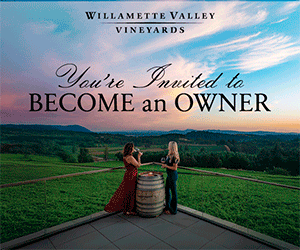America’s Got Yer Goat
Pioneering farmers start nation’s goat cheese revolution
Creating a successful product for a market that does not yet exist is a hallmark of a visionary. Yet creating a successful new cheese category in a country hooked on sliced singles and Cheese Whiz is exactly what a small band of audacious pioneers of American goat cheese did in the 1980s, changing the palate of America along the way.
Looking back, the trajectory seems inevitable as locally made cheeses flourish at farmer’s markets, and overflow at cheese counters and mainstream groceries near and far.
In the beginning, the future of goat cheese was far from certain. The first producers started experimenting with home cheesemaking in the late ’70s, and the first handful of commercial producers came online within a few years of each other in the early- to mid-1980s.
For some, like Mary Keehn, founder of Cypress Grove in Northern California, and Judy Schad at Capriole Goat Cheese in Indiana, inspiration came from the back-to-the-land ethos of growing their own healthy foods to feed their young families. When a milk goat or two became four or eight, something had to be done with the excess milk and cheese was a logical extension.
Still others got their start through farming and 4-H projects. Jennifer Bice, founder of Redwood Hill Cheese in Sonoma, was an early producer of fluid goat milk, yogurt and kefir for the local health food market and later developed her herd for cheesemaking.
Travel to Europe’s great goat cheese regions sparked a desire to bring those flavors back home for a number of producers. Laura Chenel, of the eponymous creamery based in Petaluma, California, Allison Hooper, of Vermont Butter & Cheese, and Paula Lambert, of the Mozzarella Company in Dallas, Texas, all were inspired by travel and tasting.
All of the first-wave goat cheese producers made pilgrimages to Europe to learn from the masters at some point in their cheesemaking evolution. It was practically a requirement. The know-how and science of goat breeding and cheesemaking was not available here.
Consequently, there was a distinct lack of dairy goats. Herds had to be developed to support commercial-level production over time. Further complicating growth, goat-sized agricultural equipment for milking and feeding was not produced here and had to be imported. At the time, the entire dairy system was set up for more productive and larger, bovine cousins.
When the first commercial cheeses appeared on the scene in the early ’80s — previously there were exactly none in production in the U.S. — they were considered a novelty at best.
A breakthrough moment came when Chenel famously began selling her fresh goat cheese medallions to iconic locavore chef Alice Waters. The breaded and baked rounds of goat cheese, served alongside simply dressed mesclun greens fresh from the restaurant garden became a classic salad of the era after being featured in the “Chez Panisse Menu Cookbook” (1982).
As other innovative chefs and food publications began featuring the new, spreadable flavor sensation, things slowly began to shift. With cajoling and plenty of in-store tasting events, a skeptical public began to warm to the new flavors and eventually sought them out for home cooking.
Changing public perception and developing the American palate toward fresh goat cheese was instrumental as more aged and specialty cheeses made their way to market in the early ’90s. Classics like Humboldt Fog, Wabash Cannonball, O’Banon and Hoja Santa paved the way, introducing ripened and leaf wrapped cheeses and further expanding the idea of what goat cheese could be in America.
This small but determined group of taste-changers established the market and built consumer awareness and enthusiasm. Today, each of the pioneering companies continues to innovate and thrive, continuing to lead the way in a thriving industry inspired by their early efforts. And our palates are all the better for it.
Oregon Goat Cheese Greats
Briar Rose Creamery
19231 N.E. Fairview Drive, Dundee
503-538-4848
www.briarrosecreamery.com
CHICK PICK: Madrona
Washed-rind Taleggio-style cheese with a silky texture and herbaceous palate.
Rivers Edge Chèvre
6315 Logsden Farm, Logsden
541-444-1362
www.threeringfarm.com
CHICK PICK: Sunset Bay
Ripened goat cheese with an ash coating and a vein of Spanish pimentón paprika in the center.
Ferns Edge Goat Dairy
39466 Hwy. 58, Lowell
541-937-2093
www.fernsedgegoatdairy.com
CHICK PICK: Mt. Chanterelle Pyramid Ripened fresh goat cheese coated in locally harvested dried Chanterelle mushrooms.
Pholia Farm
9115 W. Evans Creek, Rogue River
541-582-8883
www.pholiafarm.com
CHICK PICK: Hillis Peak
Natural-rind cheese aged six to eight months and named after the mountain east of the farm.



 Christine Hyatt promotes the wonders of fine cheese through food writing, recipe creation, food photography and video. Connect with her on Facebook or
Christine Hyatt promotes the wonders of fine cheese through food writing, recipe creation, food photography and video. Connect with her on Facebook or 









